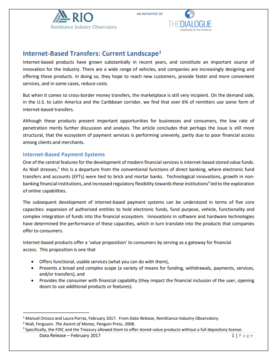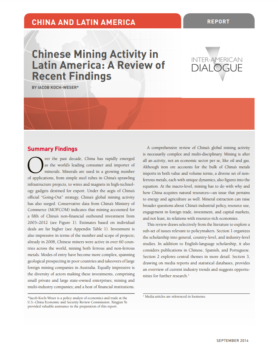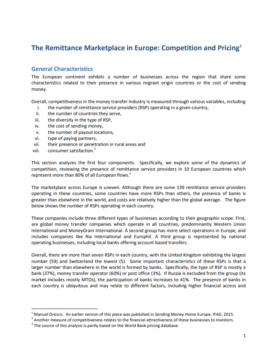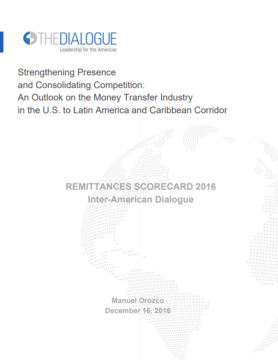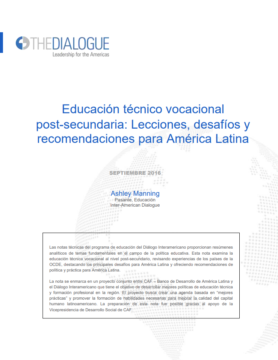
Post-Secondary Technical and Vocational Education
Post-secondary technical vocational education is primarily directed towards youth that have recently finished high school, preparing them directly for the labor market.
Post-secondary technical vocational education is primarily directed towards youth that have recently finished high school, preparing them directly for the labor market.
This article describes the classroom requirements for an effective education reform. It is only available in Spanish and Portuguese.
Internet-based products have grown substantially in recent years, and constitute an important source of innovation for the remittance industry. Although these products present important opportunities for businesses and consumers, the low rate of penetration merits further discussion and analysis. The article concludes that perhaps the issue is still more structural, that the ecosystem of payment services is performing unevenly, partly due to poor financial access among clients and merchants.
China has rapidly emerged as the world’s leading consumer and importer of minerals.
Este libro recoge un conjunto de estudios preparados en el marco de las actividades del Grupo de Trabajo sobre Desarrollo Profesional Docente del Programa de Promoción de la Reforma Educativa en América Latina y el Caribe (PREAL). En su conjunto, dan cuenta de las características personales y profesionales de los maestros…
This text analyzes the remittance marketplace in Europe based on selected indicators that measure: number of remittance service providers (RSPs), number of countries they serve, the diversity in type of RSP, the cost of sending money, the number of payout locations, type of paying partners, their presence or penetration in rural areas, and consumer satisfaction.
This report card seeks to strengthen the capacity of national groups to analyze education policy in El Salvador
In its fourth edition, the Remittances Scorecard ranks 30 companies working in 11 Latin American and Caribbean countries. It evaluates them across 12 indicators to assess their performance and competition in the money transfer industry.
In recent years, debates on education policy have been shifting their focus from educational quantity—getting more children in school and ensuring they stay longer—to educational quality—the learning that children acquire while at school.This change is welcome. Evidence suggests that low-quality schooling confers few benefits, and that quality education (as measured…
This report card seeks to strengthen the capacity of national groups to analyze education policy in the Dominican Republic.
This report card seeks to strengthen the capacity of national groups to analyze education policy in Honduras.
The globalization of markets is creating increasing pressure for educational reform in Latin America.
Traditional policies , mainly based in expanding coverage to more students,are currently inadequate tothe social and economic changes that are happening in the region.
This report presents the findings of a comparative study about the academic background of teachers in primary and secondary education in the US, South Korea, Hong Kong, Singapore, Thailand and Japan.
The Chilean education system has 180,000 teachers and is divided into preschool, elementary, middle, higher, technical and adults. This paper deals with the first four levels. The first three types of schools can be municipal (state funding), private (Private funding) or private subsidized (with mixed funding). To enroll in universities, one…
